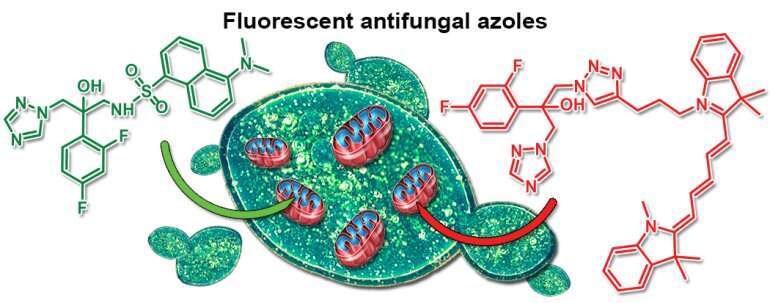
Real-Time Imaging of the Azole-Class of Antifungal Drugs in Live Candida Cells
Azole drugs are the most frequently prescribed antifungals, with fluconazole the most widely used systemic azole drug, yet where they localize within fungal cells and how they are imported remain poorly understood. Azole antifungals target lanosterol 14α-demethylase, a cytochrome P450, encoded by ERG11 in Candida albicans, the most prevalent fungal pathogen. We report the synthesis of fluorescent probes that permit visualization of antifungal azoles within live cells. Probe 1 is a dansyl dye-conjugated azole and probe 2 is a Cy5-conjugated azole. Docking experiments indicated that each of the probes can occupy the active site of the target cytochrome P450. Like the azole drug fluconazole, probe 1 is not effective against a mutant that lacks the target cytochrome P450. In contrast, the azole drug ketoconazole and probe 2 retained some antifungal activity against mutants lacking the target cytochrome P450, implying that both act against more than one target. Both fluorescent azole probes co-localized with the mitochondria, as determined by fluorescence microscopy with MitoTracker dye. Thus, the two fluorescent probes reported have the potential to facilitate the collection of detailed information about the biological properties of the important azole class of antifungal drugs.
Benhamou, R. I.; Bibi, M.; Steinbuch, K. B.; Engel, H.; Levin, M.; Roichman, Y.; Berman, J.; Fridman, M. ACS Chem. Biol. 2017, 12, 1769–1777.

Powered by Eventact EMS